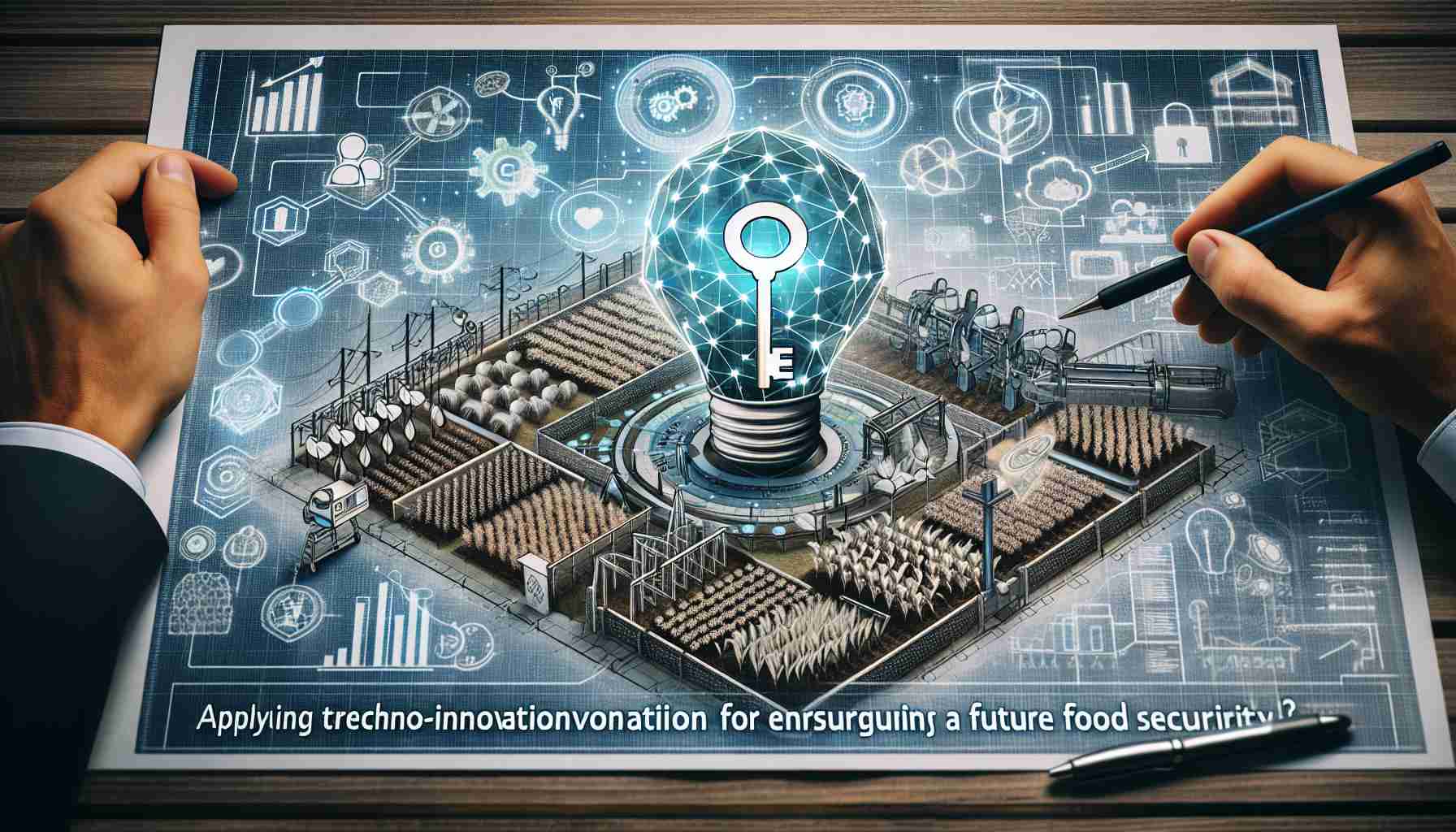- New guidelines aim to integrate cutting-edge technology with traditional agriculture to enhance food security and sustainability.
- Technological advancements include drone fleets for farmland analysis and soil sensors for real-time data on irrigation needs.
- Emphasis on empowering farmers with technology skills to transform agriculture into a tech-driven field.
- Facing climate challenges makes adopting these innovations crucial for global food security.
- The initiative is a call to action for nations to innovate and align agriculture with modern tech for thriving communities.
Dawn breaks over fields that might look the same as ever, but beneath the surface, a revolution stirs. The world’s food security no longer hinges solely on the toil of the farmer. In recent developments, policymakers have crafted a sweeping set of guidelines aimed at marrying cutting-edge technology with traditional agriculture, promising a bounty of benefits.
Picture this: drone fleets scouring vast expanses of farmland, providing farmers with unprecedented insights. These guidelines champion such advancements, encouraging the integration of smart tools that can forecast weather patterns and optimize crop yields with pinpoint precision. Imagine sensors embedded in the soil, communicating real-time data that ensures every drop of water nourishes the crops, leaving nothing to chance or waste.
Yet, it isn’t just about machines. These guidelines emphasize empowering those with boots on the ground. By equipping farmers with tech skills, the very act of sowing seeds becomes a high-tech endeavor. Such initiatives aim to uplift entire communities, turning challenges into opportunities for prosperity.
The thrust is crystal clear: innovate to sustain. As climate challenges loom large, integrating these technologies isn’t just an option; it’s an imperative. By aligning agriculture with modern tech, nations can not only feed their populations but also safeguard against the unpredictable whims of nature.
The horizon gleams with promise. This blueprint isn’t just a document; it’s a call to action. As food security and technology unite, the future whispers a tantalizing hope — that of fields flourishing and communities thriving, all driven by the synergy of human effort and technological genius. Welcome to the dawn of agriculture’s digital renaissance.
Unveiling the Digital Farming Revolution: How Technology Transforms Agriculture
How-To Steps & Life Hacks: Implementing Technology in Agriculture
1. Start with Soil Sensors: Install smart soil sensors to gain insights into soil moisture levels, pH, and temperature. These sensors help in making informed irrigation and fertilization decisions. link name
2. Leverage Data Analytics: Utilize platforms like Climate FieldView or Granular to analyze data collected from drones and sensors. This aids in predicting weather patterns and disease outbreaks.
3. Adopt Drone Technology: Use drones equipped with multispectral cameras to monitor crop health, identify pest infestations, and assess yield potential from an aerial view.
4. Education and Training: Engage in workshops or online courses that focus on digital farming skills to ensure effective utilization of technology on the ground.
5. Implement Robotics for Labor-Intensive Tasks: Consider using robotic harvesters and autonomous tractors to automate repetitive tasks, thus saving time and reducing labor costs.
Real-World Use Cases
– Precision Agriculture: Farms in the U.S. Midwest have successfully employed precision agriculture techniques to reduce water usage by 30% and improve crop yields by optimizing resource application.
– Pest Management: Farmers in India have utilized AI-powered apps to identify and manage pest infestations effectively, reducing crop losses by up to 20%.
Market Forecasts & Industry Trends
– According to a MarketsandMarkets report, the agricultural technology market is projected to reach $22.5 billion by 2025, driven by advancements in AI, IoT, and data analytics.
– Key players like John Deere and Bayer are investing heavily in smart farming solutions, indicating a trend towards increasing automation and data-driven decision-making.
Reviews & Comparisons
– John Deere vs. AGCO Smart Farming Solutions: John Deere offers comprehensive solutions with their precision farming suites, seen as more user-friendly, while AGCO provides highly customizable options better suited for larger farms.
Controversies & Limitations
– Data Privacy Concerns: The increased use of digital tools raises concerns about data privacy and ownership, especially since sensitive farm data can be exploited if not securely managed.
– Digital Divide: Not all farmers have equal access to technology, particularly in developing nations, posing a challenge to widespread adoption.
Features, Specs & Pricing
– Soil Sensors: Prices range from $50 to $500 depending on features like wireless connectivity and data reporting frequency.
– Drones for Agriculture: Entry-level drones begin around $1,000, with advanced multi-spectral models costing upwards of $10,000.
Security & Sustainability
– Implement robust cybersecurity measures to protect data integrity and privacy.
– Sustainable practices are supported by optimizing inputs (water, seeds, fertilizers) to minimize waste and environmental impact.
Tutorials & Compatibility
– YouTube channels such as “Digital Farmer” and platforms like Coursera offer extensive tutorials on implementing agricultural technology effectively.
Pros & Cons Overview
Pros:
– Increased crop yields
– Better resource management
– Enhanced decision-making
– Cost savings in the long term
Cons:
– High upfront costs
– Need for technical skills
– Potential data vulnerabilities
Actionable Recommendations
– Begin with pilot projects to test and adjust technology applications.
– Develop partnerships with tech companies to access expertise and resources.
– Regularly update skills and stay informed about industry advancements.
By embracing the digital farming revolution, agrarians can ensure their practices are sustainable, efficient, and future-proof. The journey towards smart agriculture is filled with challenges but equally diverse opportunities, and starting small can lead to significant transformations.
For more insights on technological integration in agriculture, visit link name.
